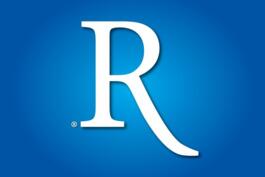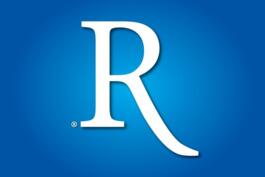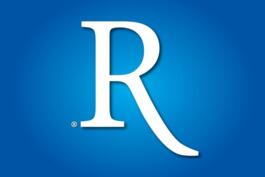COVID Masking Déjà vu?
A Commentary By Brian Joondeph
COVID first emerged on the scene 3 ½ years ago, along with facemasks, distancing, lockdowns, quarantines, followed by mandatory vaccination and other dystopian social controls. As life has recently been returning to normal, it feels like Groundhog Day, with an eerie sense of déjà vu, especially around masking.
As Forbes reported, “Officials in New York City this week reportedly urged residents to wear masks in public as a new strain of Covid-19 continues to spread throughout the country.” Morris Brown College in Atlanta requires masks for all students and faculty. Kaiser Permanente Santa Rosa California reinstated a mask mandate. Lionsgate Studios in Santa Monica re-required masking, but then changed its mind.
Before and during the early days of COVID, following the science meant not wearing a mask to protect yourself and others from a highly contagious respiratory virus. But around that time, following the science morphed from medical to political science.
Both Dr. Anthony Fauci and Surgeon General Jerome Adams said masking was unnecessary and potentially harmful. A few months later, Dr Fauci found new science to follow and announced that “double masking makes common sense.”
Sure, masks will stop large droplets from someone sneezing or coughing, but what about actual viral particles? Here’s some science:
What are the comparative sizes of viral particles and mask pores? The COVID virus is 50-140 nanometers (nm) while the pore size in standard surgical masks is 300 nm to 10,000 nm. This is using a chain-link fence to stop mosquitoes.
Are there studies to back up the utility of masks? Are Dr. Fauci or his media sycophants even looking for such studies?
A 2019 JAMA study comparing common medical masks with the “gold standard” N-95 masks and found, “There was no significant difference in the incidence of laboratory-confirmed influenza among health care personnel with the use of N95 respirators (8.2%) vs medical masks (7.2%).”
This randomized prospective clinical trial demonstrated that neither type of mask stopped a respiratory virus as 7 to 8 percent still became infected despite wearing a mask. The study also showed that the simple medical mask was equally beneficial (or non-beneficial in this case) compared to the N-95 respirator. In fact, there was non-clinically significant trend favoring the cheap masks.
An even better review is the Cochrane analysis. They review numerous high-quality studies and are considered the benchmark in healthcare effectiveness. They found:
“The pooled results of RCTs did not show a clear reduction in respiratory viral infection with the use of medical/surgical masks. There were no clear differences between the use of medical/surgical masks compared with N95/P2 respirators in healthcare workers when used in routine care to reduce respiratory viral infection.”
The lead author of the analysis confirmed, as the New York Times reported:
“There is just no evidence that they — masks — make any difference. Full stop.
“What about N-95 masks, as opposed to lower-quality surgical or cloth masks? Makes no difference — none of it.
“What about the studies that initially persuaded policymakers to impose mask mandates? They were convinced by nonrandomized studies, flawed observational studies.”
Why aren’t health authorities following this science? It seems that based on scientific studies, masks offer little if any benefit and may cause harm. This is why mask mandates were never instituted during other viral respiratory illness outbreaks and that routine mask use was discouraged.
Are there downsides to masks? A German study looked at harm from masking which, “Increases the resistance and dead space volume leading to a re-breathing of CO2.” Ironically, we are told that CO2 is harmful and destroying the planet, yet we are also told that there is no problem with children and adults rebreathing this “toxic” gas.
The German study explained further:
“There is a possible negative impact risk by imposing extended mask mandates especially for vulnerable subgroups. Circumstantial evidence exists that extended mask use may be related to current observations of stillbirths and to reduced verbal motor and overall cognitive performance in children born during the pandemic. A need exists to reconsider mask mandates.”
What happened to the medical admonition of “first do no harm”? Will mask mandates return? There are moves in that direction.
Like everything else, masks are now a political issue. A recent Rasmussen Reports survey found, “76% of Democrats supporting a mask mandate, compared to 33% of Republicans and 45% of the unaffiliated.”
Under the doctrine of “my body my choice”, anyone should be able to wear or not wear a mask, depending on their beliefs, desires, or even political affiliation. Or does “choice” only apply to certain aspects of healthcare?
With COVID, choice is replaced by fear, control, and subservience. According to the World Economic Forum, “COVID-19 has resulted in more than one in two people losing confidence in the healthcare system’s ability to handle major crises.”
How will health authorities earn back this lost trust? Someday they will need that trust and won’t have it.
Brian C. Joondeph, M.D., is a physician and writer.
Follow me on Twitter @retinaldoctor
Substack Dr. Brian’s Substack
Truth Social @BrianJoondeph
LinkedIn @Brian Joondeph
See Other Commentaries by Brian C. Joondeph.
See Other Political Commentaries.
Rasmussen Reports is a media company specializing in the collection, publication and distribution of public opinion information.
We conduct public opinion polls on a variety of topics to inform our audience on events in the news and other topics of interest. To ensure editorial control and independence, we pay for the polls ourselves and generate revenue through the sale of subscriptions, sponsorships, and advertising. Nightly polling on politics, business and lifestyle topics provides the content to update the Rasmussen Reports web site many times each day. If it's in the news, it's in our polls. Additionally, the data drives a daily update newsletter and various media outlets across the country.
Some information, including the Rasmussen Reports daily Presidential Tracking Poll and commentaries are available for free to the general public. Subscriptions are available for $4.95 a month or 34.95 a year that provide subscribers with exclusive access to more than 20 stories per week on upcoming elections, consumer confidence, and issues that affect us all. For those who are really into the numbers, Platinum Members can review demographic crosstabs and a full history of our data.
To learn more about our methodology, click here.



